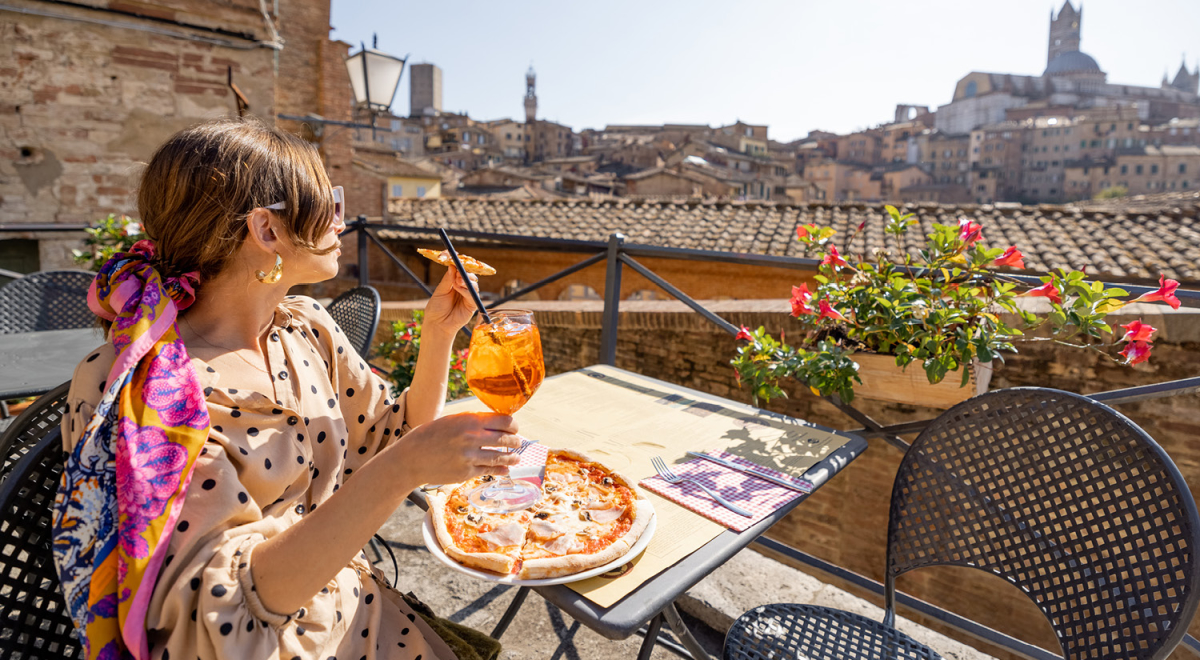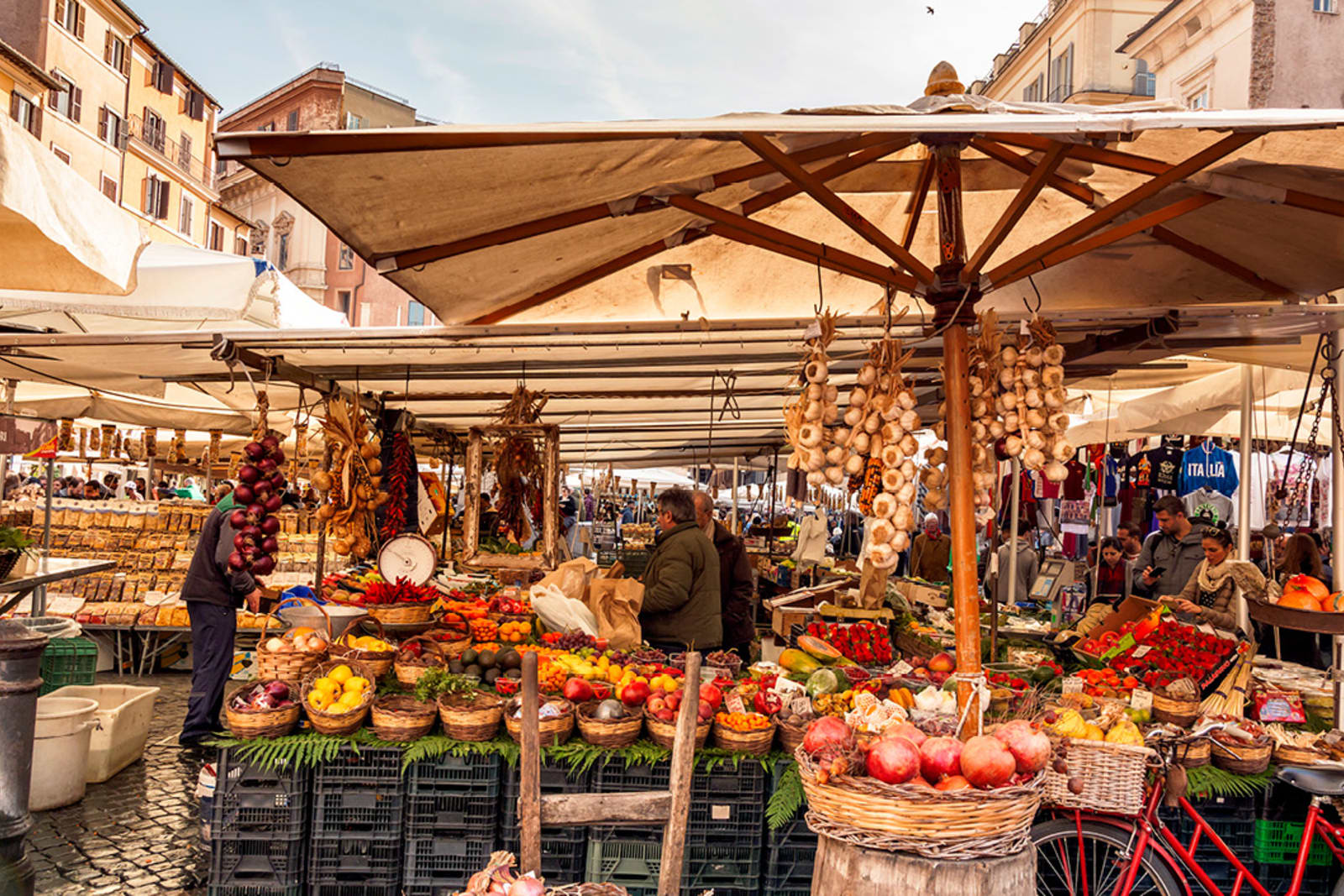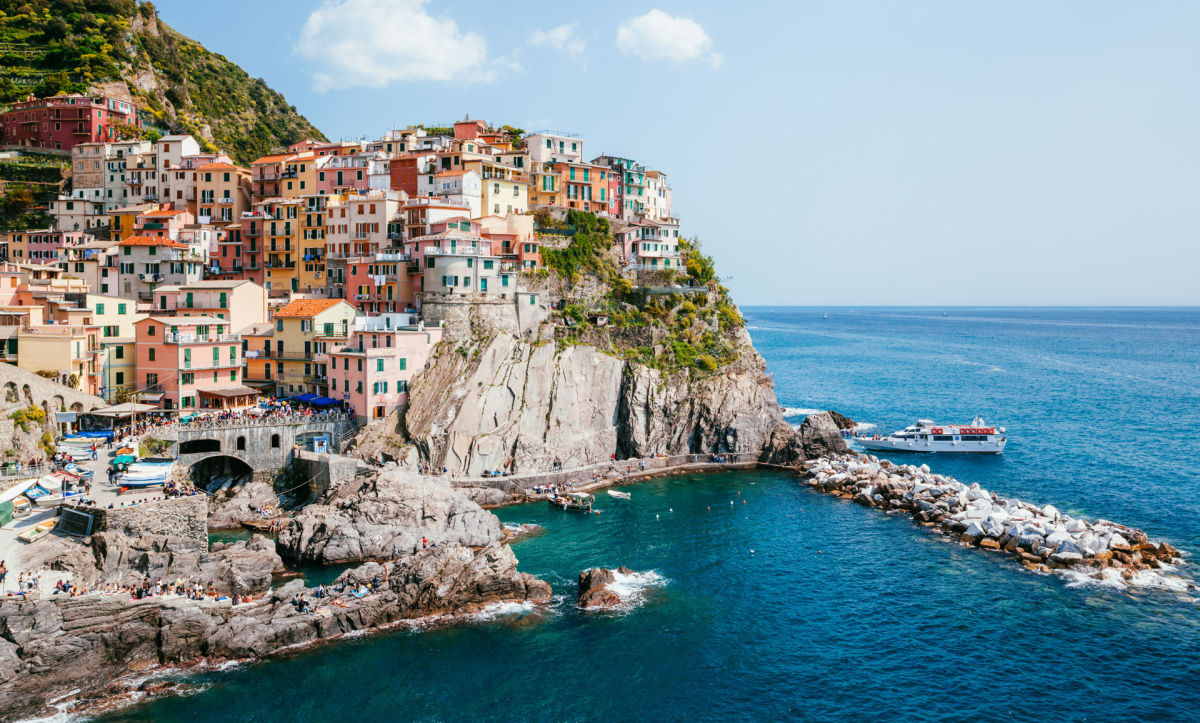3 Things Every Traveller Should Know About Italian Food Culture
In addition, we recommend 10 foods you’ve got to try in Italy — from pizza and gelato to vitello tonnato.

5min read
Published 18 May 2023

Senior Content Writer
In addition, we recommend 10 foods you’ve got to try in Italy — from pizza and gelato to vitello tonnato.
What’s your favourite food? We’re willing to bet you’re asked that question pretty frequently (say, on a first date or at a networking event). We’re also willing to bet that the majority of you answer Italian — and for good reason! From homemade pasta dishes and fresh breads to perfectly sweet desserts, there’s a lot to love. In fact, many travellers go to Italy specifically to eat the best of the best Italian cuisine.
But have you ever stopped to wonder what, exactly, makes Italian food so good? To help answer that question, we’ve done a deep dive into Italian food culture. Read on to learn about the principles of Italian cuisine and tantalize your taste buds.
What does “food culture” mean?
First thing’s first: let’s define what is meant by “food culture.” Put simply, the term is used to describe the attitudes, beliefs and practices surrounding our food systems. It encompasses how we produce, distribute and consume food, as well as how food integrates with the rest of our lives.
Broadly speaking, food cultures are influenced by how people:
- Grow, source and distribute food products
- Use ingredients and prepare meals
- Consume and share food with others
- Celebrate holidays and other events
With all of that in mind, it’s easy to see why there are so many distinct food cultures around the world. Every country, region and community engages with food differently based on economic and social factors, as well as local heritage and customs. In Japan, for instance, diners are expected to practice certain etiquette and table manners. Meanwhile, in Mexico, many chefs put an emphasis on preparing native ingredients with ancient cooking methods.
Get it? Good. Now let’s take a closer look at one of the world’s most beloved food cultures.
Italian food culture 101
Italian food culture will vary across regions — but no matter which part of the country you end up visiting, you’re bound to experience these three things.



Cooking with fresh, seasonal ingredients
We hate to break it to you…but the Italian food you eat at home isn’t that authentic. After all, it’s easier to cook spaghetti and lasagna with dried pasta than to make the noodles from scratch — and it’s extremely hard to resist a barbecue chicken pizza.
But you’ll be hard-pressed to find anything like that in Italy. That’s because Italians tend to cook using only the freshest ingredients. They’re also more likely to purchase those ingredients at markets than at large-scale grocery stores. Just like at home, vegetables, meat, fish, herbs, cheese and olive oils from local farmers and producers are usually of higher quality and therefore much tastier than the foods that are imported from elsewhere.
There’s a good chance the meals you eat on vacation will feature these Italian pantry staples:
- Extra virgin olive oil
- Balsamic vinegar
- Tomatoes
- Eggplant
- Porcini mushrooms
- Lemon
- Garlic
- Oregano
- Basil
- Capers
- Red wine
- White wine
- Cheese (mozzarella, ricotta, parmesan)
Italians also prefer simple recipes over complex cooking methods, letting the flavours shine through. Upon taking your first bite of caprese salad, prosciutto e melone or Neapolitan pizza (made with just tomato sauce, mozzarella cheese and fresh basil), you’ll understand exactly what this pillar of Italian food culture is all about.
Italy

Expert tip
The food in Italy is to die for! The best plates are found away from the tourist areas and main squares in the back streets.
Rachel
Destination Specialist
,,



Sharing recipes, traditions and stories
From the Roman Empire to the Renaissance and beyond, Italian cuisine has evolved throughout history. But even today, many of the dishes you enjoy are rooted in previous centuries. Take ribollita, for example. The popular soup was originally prepared by peasants during the Middle Ages, out of the need to consume stale bread. What was essentially a poor man’s food is now served in Italian restaurants around the world.
Clearly, Italian people are proud of their food culture and have made an incredible effort to preserve it. Even today, many family recipes are passed from generation to generation; it’s why you see so many cookbooks and blogs claiming to help you make a pasta sauce “just like nonna’s”.
This notion is perfectly encapsulated in Stanley Tucci’s memoir, Taste: My Life Through Food: “Perhaps the most precious heirlooms are family recipes,” he writes. “Like a physical heirloom, they remind us from whom and where we came and give others, in a bite, the story of another people from another place and another time.”
So, the next time you enjoy slice of pizza or a perfectly al dente linguine, think about where the dish came from — there’s a good chance it has humble beginnings, religious significance or another connection to Italy’s rich culture and history.



Enjoying the company of friends and family
How often do you actually sit down and enjoy a meal without any distractions? We’re talkin’ no TVs, no tablets, no phones — just good conversation around the kitchen table. According to a 2020 survey, 65% of Canadian families don’t eat together as much as they would like. We get it; between working, running errands and helping your kids with their science fair projects, it can be difficult to gather everyone for dinner.
Italians, on the other hand, prioritize coming together during mealtimes. More so, they take their time eating, and view each breakfast, lunch and supper as an opportunity to meet and mingle. It’s one of the reasons why Italian dinners are typically divided into eight courses:
- Aperitivo: Pre-meal drink served with olives and other light snacks
- Antipasti: Cured meats and marinated vegetables
- Primo: Pasta, risotto, polenta or soup
- Secondo: Cooked meat or seafood
- Contorno: Vegetable side dish, typically served with the secondo
- Insalata: Lightly dressed salad (omitted if the contorno is made with leafy greens)
- Formaggio e frutta: Cheeses and fresh fruits
- Dolce: An Italian dessert such as tiramisu, cannoli or gelato
You’re probably wondering how you can manage to eat so much in one sitting, but it’s really not as difficult as it seems — especially with so many delicious dishes to choose from (more on this below)! Plus, eating a meal in this way is known to help with digestion.
That said, you won’t be expected to consume every course at every meal. But be prepared to bring your appetite and talking points anyway! This important aspect of Italian food culture can be experienced across the country, from Rome, Florence and Venice to Naples, Milan and Pisa.



10 foods you need to eat in Italy
We couldn’t tell you all about Italian food culture and then not recommend specific foods for you to try. So, without further ado…
In our opinion, no trip to Italy is complete without getting a taste of:
- Agnolotti: Hailing from the Piedmont region of Italy, this stuffed pasta is usually filled with a delectable mix of roasted meat or vegetables.
- Osso buco: A hearty dish of slow-cooked beef, typically served with risotto or polenta. How else do you expect to sop up all that braising liquid?
- Biscotti: This twice-baked cookie is best enjoyed with a cappuccino.
- Gelato: Try as many flavours of the Italian ice cream as possible — especially the classic stracciatella (vanilla with thin shavings of chocolate).
- Fritto misto: Think of this dish as the Italian version of tempura.
- Polenta: Made of yellow cornmeal, this dish from northern Italy may be served hot as a creamy porridge or cooled and shaped into loaves, which can then be baked, fried or grilled.
- Pizza capricciosa: This pizza pie, topped with cheese, ham, mushrooms and artichokes, is *chef’s kiss*.
- Truffle: An abundance of truffles grow in Italy, so don’t miss your chance to try ’em (just remember to check the price tag first — this luxury ingredient isn’t cheap)!
- Vitello tonnato: Take our word for it: this dish (which literally translates to “veal with tuna sauce”) tastes better than it sounds!
- Maritozzi: These whipped cream-stuffed brioche buns are perfect for travellers with only a slight sweet tooth.
As if that wasn’t enough to whet your appetite, we’ve also got extra-hot deals on Italian vacation packages. Get in touch with a Flight Centre travel consultant to start planning your next trip!
